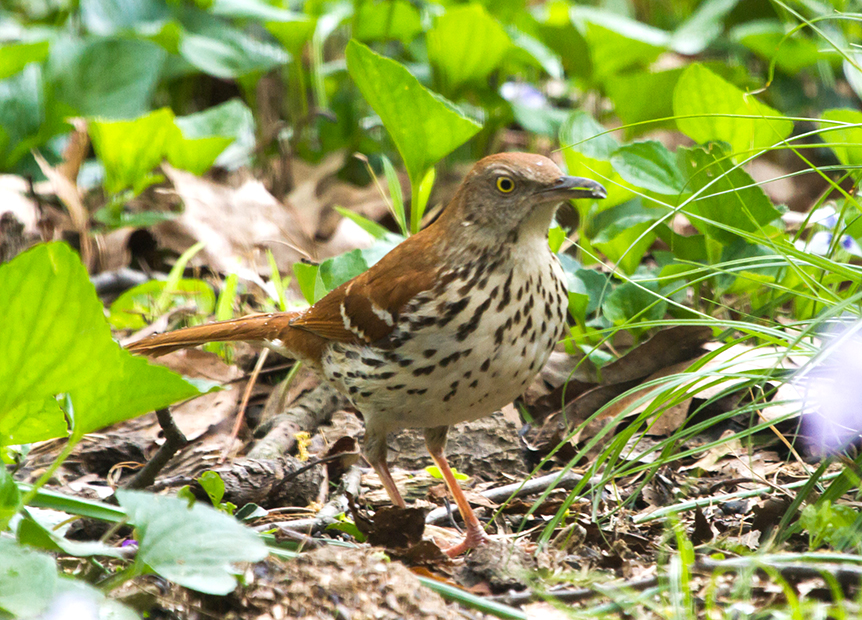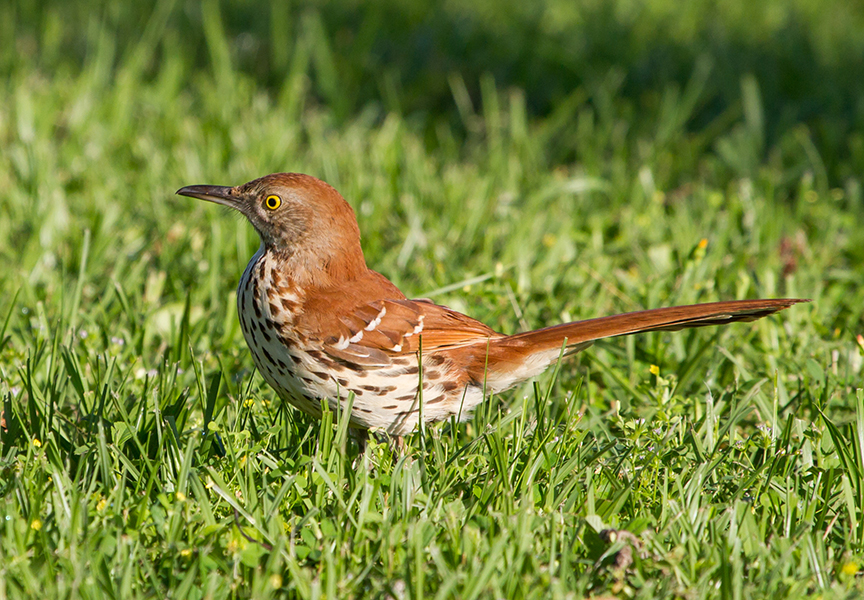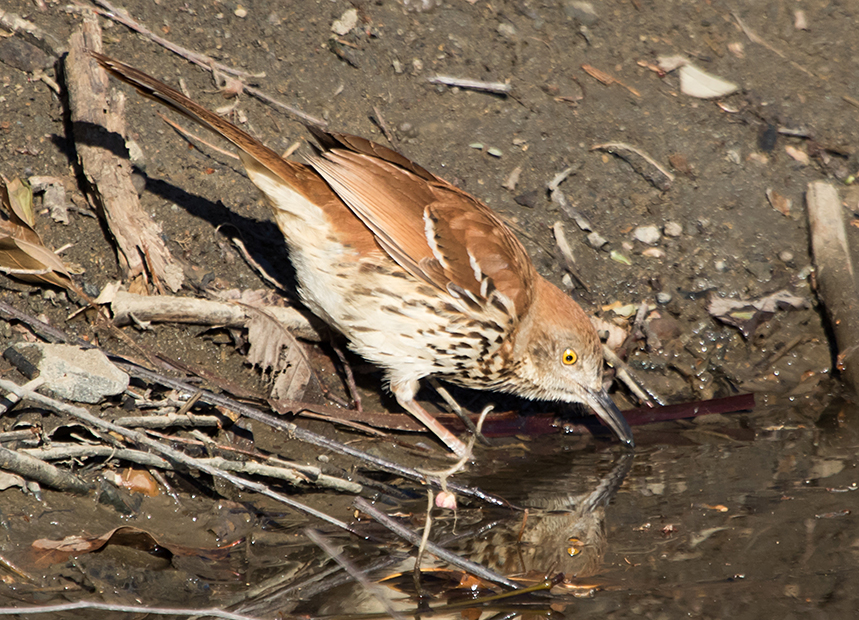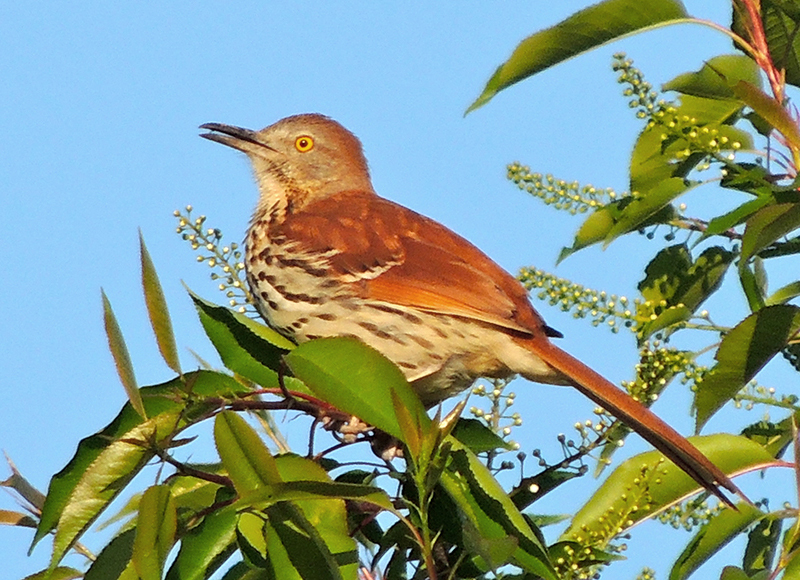| Early Spring Date: | March 23 |
| Late Spring Date: | May 26 |
| Best Dates to See in Spring: | April 8 - May 1 |
Spring: Brown Thrashers are common breeding birds in the Washington metro area. They are not common at Monticello Park, but they have bred on the Kust property, which abuts the park. They start to show up at the park in early to mid-April. They can be difficult to find unless they are singing. Most Brown Thrashers winter in states to the south, but a few spend the winter in the Washington area. Migrants from the south usually arrive earlier than other spring migrants, because they have a shorter distance to travel. A more reliable place to see thrashers is Occoquan Bay National Wildlife Refuge, where they sing on territory during the early spring.
Fall: Brown Thrashers occur infrequently at Monticello during the fall migration. On average, a few are seen each year.
Where to See Them in the Park
Brown Thrashers usually skulk and are difficult to see. They are most likely to be in low vegetation at the upper end of the park. They often forage on the ground.
Physical Description

Brown Thrashers are mimic thrushes, related to mockingbirds and catbirds. They look like the equivalent of a mockingbird with red hair and freckles. The sexes are similar, and there is no variation between spring and fall plumage. The underparts are light with heavy brown streaks.

The head and back are rufous, and each wing has two white wingbars. They have intense yellow eyes, and their long dark bill curves slightly downward.

On rare occasions, you could see one in the stream.

Juvenile birds look like disheveled versions of the adults.
Vocalizations

Like the other members of their family, Brown Thrashers are accomplished mimics. They have more than 1,100 song types, and each individual can sing up to 3,000 song phrases. When mimicking other species, thrashers sing each song they are copying 2 or 3 times. Mockingbirds sing each song 4 or 5 times, and catbirds sing each song only once. When on breeding territory, Brown Thrashers often perch on a branch near the top of a tree early in the morning and sing loudly and persistently.
Hear the vocalizations of the Brown Thrasher.Notes
Thrashers can be aggressive, even though their name has nothing to do with thrashing things. John James Audubon's Brown Thrasher painting in his Birds of America labeled the species as the Ferruginous Thrush, with ferruginous meaning the color of iron rust. Thrushes and thrashers are in different families, but one of the species for which a Brown Thrasher could be mistaken is a Wood Thrush. The Wood Thrush is plumper, lacks wingbars, has dark eyes, and has spots rather than streaks on the breast.
Origin of Names
Common Name: Brown from the plumage. Thrasher from thrusher, a thrush.
Genus Name: Toxostoma means bow mouth, from the curved bill.
Species Name: Rufum means reddish, from the plumage.
Brown Thrasher video footage
Return to the Index
